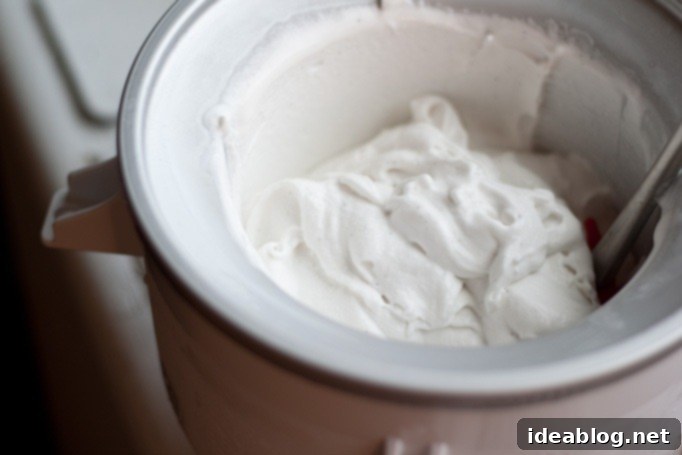Homemade Vanilla Coconut Lemongrass Ice Cream: A Refreshing Dairy-Free Delight
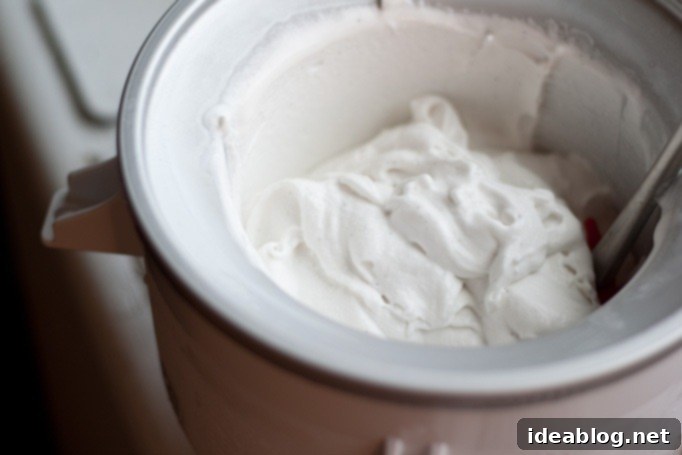
There are some culinary experiences that simply stick with you, sparking a desire to recreate their magic in your own kitchen. For me, one such moment occurred during a memorable trip to Glasgow, Scotland, back in 2011. It might seem an unlikely place to discover the vibrant, aromatic notes of lemongrass in a dessert, but that specific encounter left an indelible mark on my palate and imagination.
My parents were living abroad at the time, and I was visiting them. One evening, we enjoyed an exquisite dinner at the charming Hotel Du Vin, just a few blocks from their apartment. Beyond an absolutely phenomenal soup (one of the best I’ve ever had), the dessert course truly stole the show: a delicate lemongrass crème brûlée. The unexpected fusion of classic French technique with exotic Southeast Asian fragrance was a revelation, demonstrating how versatile and enchanting lemongrass could be when used beyond savory dishes. It was a dessert that lingered in my memory, inspiring a long-standing craving to develop my own lemongrass-infused sweet treat.
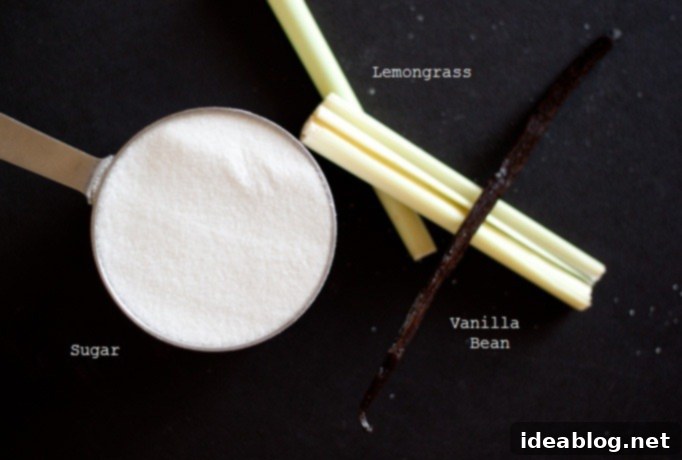
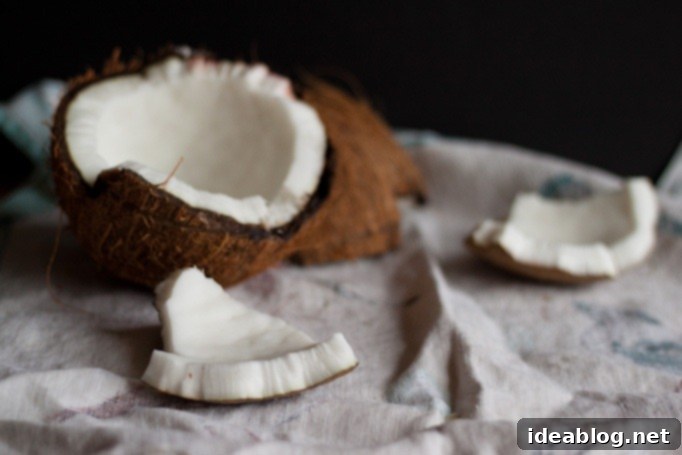
The Journey to Dairy-Free Creaminess: Crafting a Heavenly Coconut Ice Cream
Since that delightful trip to Glasgow, I’ve been eager to experiment with lemongrass in dessert applications. This Vanilla Lemongrass Coconut Ice Cream is the culmination of that inspiration – an incredibly simple yet profoundly satisfying recipe that comes together with minimal effort, yielding spectacular results. What makes this recipe truly special is its inherent dairy-free nature, making it a perfect option for those with dietary restrictions or anyone simply seeking a lighter, refreshingly exotic dessert.
It’s truly remarkable how a straightforward combination of full-fat coconut milk and granulated sugar can transform into such a rich, unbelievably pillowy, and utterly dairy-free ice cream. The secret lies in the high fat content of full-fat coconut milk, which mimics the creaminess of dairy without any animal products. This clever trick was something I first picked up during my culinary school restaurant externship, where I worked the pastry station and learned the versatility of plant-based ingredients in creating luxurious desserts.
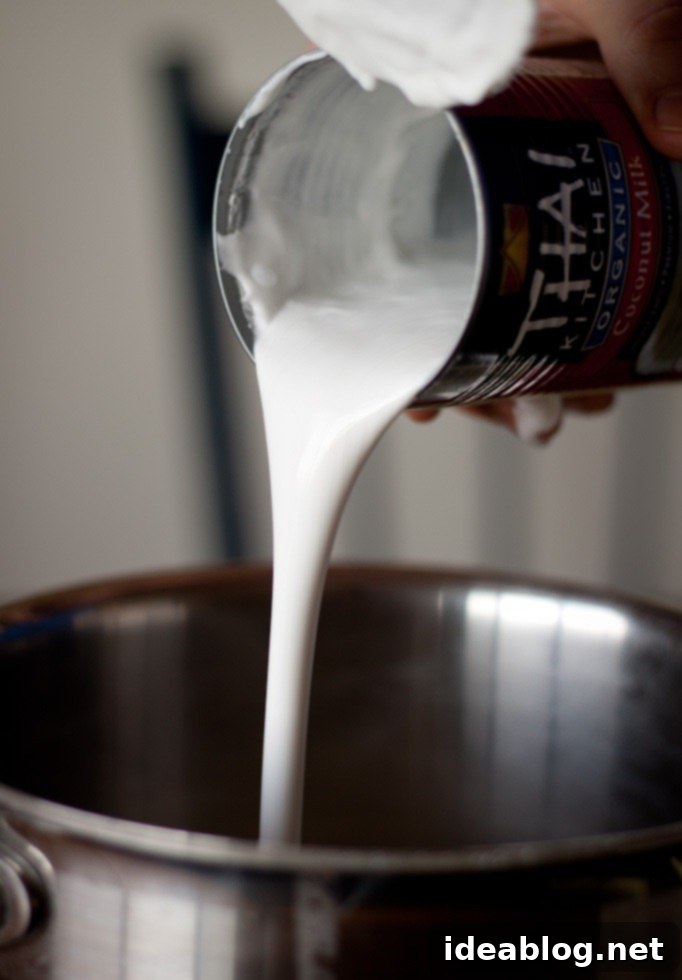
Unlocking the Flavors: Lemongrass and Vanilla Infusion
The star flavors of this ice cream are, undoubtedly, vanilla and lemongrass. The vanilla bean provides a classic, sweet, and comforting base, while the fresh lemongrass introduces a bright, citrusy, and subtly floral note that elevates the entire experience. Infusing these ingredients into the coconut milk mixture is a simple process that yields a deep, complex flavor profile that is both intriguing and utterly delicious.
When selecting your lemongrass, look for firm, pale green stalks with a fragrant aroma. For vanilla, a whole vanilla bean will provide the most intense and authentic flavor, with tiny black seeds dispersed throughout the ice cream. However, if you’re in a pinch, a good quality vanilla extract can be used as a substitute, though the depth of flavor won’t be quite the same. The infusion process is gentle and allows the delicate flavors to meld beautifully without becoming overpowering.
Versatility and Customization: Make It Your Own
While this recipe for Vanilla Lemongrass Coconut Ice Cream is fantastic as written, it’s also wonderfully adaptable to your preferences. If fresh lemongrass isn’t readily available in your area, or if you simply prefer a different flavor, feel free to omit it entirely. The vanilla coconut ice cream on its own is still incredibly delicious, offering a pure, tropical sweetness.
Similarly, if you’re out of vanilla beans or prefer a more minimalist approach, you can even leave out the vanilla bean. The rich coconut base still creates a wonderful canvas for other flavors. This flexibility makes it a go-to recipe for any occasion.
Beyond omission, this recipe is a playground for culinary creativity! Feel free to experiment with your own flavor infusions. Imagine a hint of ginger, a touch of cardamom, or a swirl of mango puree. For a fun, creamsicle-inspired treat, you could even layer it with homemade orange marmalade, adding a tangy, fruity burst to the creamy coconut base. The possibilities are endless, making this recipe a fantastic foundation for your frozen dessert adventures.
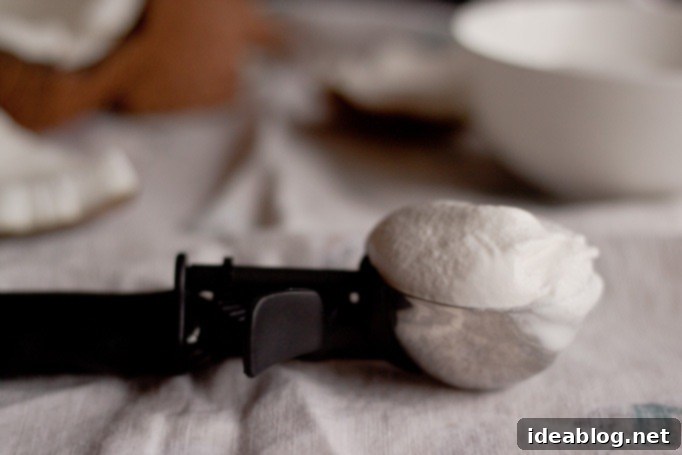
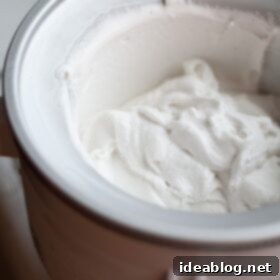
Vanilla Lemongrass Coconut Ice Cream
Pin
Review
SaveSaved!
Ingredients
- 2 (14.5-ounce) cans full-fat coconut milk
- ¾ cup (150g) granulated sugar
- 1 whole vanilla bean
- ¾ ounce (20g) fresh lemongrass
Instructions
-
Before opening the cans of full-fat coconut milk, gently shake them. This helps to recombine the coconut fat and water, which often separate during storage, making it easier to pour. Combine the shaken coconut milk and granulated sugar in a medium saucepan. Place the saucepan over medium-low heat and stir continuously with a whisk or spoon until the sugar has completely dissolved. Ensure no sugar crystals remain.
-
Using a sharp knife, carefully slice the whole vanilla bean in half lengthwise. With the back of the knife or a small spoon, scrape out the fragrant vanilla bean paste. Add both the scraped vanilla bean paste and the empty vanilla bean pod to the saucepan with the coconut milk and sugar mixture.
-
Prepare the fresh lemongrass: slice the stalks in half lengthwise. Then, using the side of your knife (or a meat tenderizer/rolling pin), gently crush the lemongrass stalks to release their essential oils and maximize flavor. Finally, chop the crushed lemongrass roughly into manageable pieces. Add these pieces to the milk mixture in the saucepan and stir everything together to combine. Allow the ice cream mixture to infuse over low heat for about 15 minutes, stirring occasionally to prevent scorching and ensure even flavor distribution. This gentle simmering helps extract the wonderful aromas of both vanilla and lemongrass.
-
Remove the saucepan from the heat. Carefully transfer the infused mixture to a heatproof bowl. For quicker cooling, a shallow bowl with a larger surface area is ideal. Cover the bowl tightly with plastic wrap to prevent a skin from forming and to lock in the aromatic flavors. Transfer the covered bowl to the refrigerator to chill thoroughly and continue infusing, ideally overnight (a minimum of 6-8 hours is recommended). Proper chilling is crucial for achieving the best ice cream texture.
-
The next day, retrieve the chilled ice cream mixture from the refrigerator. Set a fine-meshed sieve over a large, clean bowl or pitcher. Pour the infused mixture through the sieve, effectively straining out and discarding the lemongrass pieces and the vanilla bean pod. This leaves you with a smooth, beautifully flavored ice cream base.
-
Pour the strained mixture into your ice cream maker’s frozen bowl and churn according to the manufacturer’s instructions. Churning times vary by machine, but typically range from 20-30 minutes until the mixture reaches the consistency of soft-serve ice cream. Once churned, transfer the soft ice cream to an airtight freezer-safe container. To prevent ice crystals from forming on the surface, press a layer of plastic wrap or parchment paper directly onto the surface of the ice cream before securing the lid. Freeze for a minimum of 6 hours, or preferably overnight, to allow the ice cream to firm up to the perfect scoopable consistency before serving.
Mastering the Churn: Tips for Perfect Texture
Achieving that perfectly smooth, creamy texture in your homemade ice cream requires a few key considerations. First and foremost, ensuring your ice cream base is thoroughly chilled overnight is paramount. A cold base churns faster and results in smaller ice crystals, leading to a smoother, less icy final product. Don’t rush this step!
When it comes to churning, always follow your ice cream maker’s specific instructions. Most home machines will take between 20-30 minutes to churn the mixture to a soft-serve consistency. Over-churning can sometimes introduce too much air, while under-churning can lead to a more icy texture. The goal is a consistency that is thick but still pourable, resembling a very soft custard.
After churning, the ice cream will be soft. This is when the “ripening” or “hardening” phase in the freezer becomes important. Transferring it to an airtight container and allowing it to freeze for at least 6 hours (or, again, preferably overnight) allows it to firm up to the ideal scoopable texture. Don’t forget the plastic wrap or parchment paper pressed directly onto the surface to prevent freezer burn and ice crystal formation.
Serving Suggestions and Creative Twists
This Vanilla Lemongrass Coconut Ice Cream is fantastic on its own, a true testament to the power of simple, high-quality ingredients. However, it also serves as an excellent base for various toppings and accompaniments. Consider pairing it with a sprinkle of toasted coconut flakes for added texture, a drizzle of passion fruit puree for extra tropical tang, or even fresh berries like raspberries or blueberries.
For a truly decadent experience, serve a scoop alongside a slice of warm mango sticky rice or a light, fluffy chiffon cake. The refreshing notes of lemongrass and vanilla beautifully complement other Asian-inspired desserts or fresh fruit platters. You could also create a unique sundae with homemade caramel sauce infused with ginger, or a spicy chocolate drizzle to play off the exotic flavors.
Thinking beyond the basic scoop, this ice cream could be molded into elegant individual servings using silicone molds before freezing, then unmolded and served with a delicate sauce. Or, transform it into a sophisticated ice cream sandwich by placing scoops between delicate shortbread cookies.
Why Choose This Dairy-Free Delight?
There are numerous reasons why this Vanilla Lemongrass Coconut Ice Cream should be your next homemade dessert project. Firstly, it offers a gourmet flavor profile that feels both exotic and comforting, making it perfect for impressing guests or simply treating yourself. The combination of bright lemongrass and classic vanilla, harmonized by the rich coconut, is truly unique.
Secondly, its dairy-free nature makes it accessible to a wider audience, including those with lactose intolerance, dairy allergies, or who follow a vegan lifestyle. You don’t have to compromise on creaminess or flavor to enjoy a plant-based treat.
Finally, the simplicity of the recipe is a major draw. With just a handful of ingredients and straightforward steps, even novice ice cream makers can achieve professional-quality results. The slight patience required for chilling and freezing is well worth the wait for this smooth, fragrant, and utterly delicious homemade ice cream. Give this recipe a try and let the refreshing flavors transport you to a tropical paradise!
